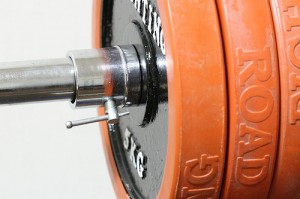In case anyone’s interested in a medium-term workout, here’s the one I’m doing. I’ve spent a good bit of the past several months deadlifting and side pressing. To a large degree I’ve followed one of the programs out of Pavel Tsatsouline’s Power to the People. So now I want to convert some of that strength into power–and I want to generate power repeatedly–i.e. power endurance. So here’s what I’ve designed. Follow along if you’d like and please let me know your results.
Pre-Workout:
All workouts are preceded by a combination of Z-Health Neural Warm-up Levels I and II. I mobilize various joints such as feet and hands, knees and elbows, hip, shoulders, pelvis and spine. I want to wake them up fully before I start to generate a lot of force. I want to make sure each individual joint is read to go before they start working together. Next comes the warm-up and workout prep.
The warm-up involves body weight movements that resemble the workout movements. The workout prep consists of the main lifts I’ll use for the day but with a light load. Here’s how the workout might go:
Body weight goblet squat: 6 reps
Lateral lunges: 6 reps
Crossing lunges: 6 reps
Rotating T: 6 reps
Cross-crawl patterns: 20-40 reps
Get ups, light swings, snatches, presses, high pulls
The Workout, Week 1:
– Monday
1) One-arm snatches: 5 each arm followed immediately by
Swings: 20 two- or- one-hand
Repeat 3x as fast as possible. You track my heart rate and the time it takes to complete this circuit. This will show your progress.
2) Clean & press + pull-up ladders: 1, 2, 3 x 3 sets
Here’s how this works. Clean and press a kettlebell for one rep on each arm then do one pull-up. Next, clean and press for two reps each arm followed by two pull-ups. Then perform three cleans and presses each arm followed by three pull-ups. Perform this process three times. Rest between sets as needed. This isn’t a race like the previous circuit. Use perfect form! No hunched struggling pull-ups. Use an assisted pull-up machine or a partner if you need help.
– Wednesday
1) Double kettlebell snatches: 5 reps followed immediately by
Swings: 20 reps
Do this circuit once only.
2) Repeat Monday’s clean & press + pull-up ladders x 3 sets
– Friday
1) Repeat Monday’s snatch and swing circuit twice.
2) Repeat the clean & press + pull-up ladders x 3 sets.
Week 2:
Perform the same snatch and swing circuits but move up in weight if the circuits become easy. As for the clean & press + pull-up circuit, you’ll add one set. This means that you’ll do 4 x 1, 2, and 3 reps. (You did three sets of 1, 2, and 3 reps in week 1.)
Continue to use perfect form. Stop early if you need to. Don’t go to out-and-out failure. The work should be challenging but not impossible.
Week 3:
Week three is essentially the same. You may need to move up in weight on the snatches and swings. Stay with three sets on Monday, one set on Wednesday and two sets on Friday. Experiment with one- and two-hand snatches and swings.
Add another set to the clean & press + pull-up ladders. So that’s 5 x 1, 2, 3, reps.
Simple right? Shouldn’t necessarily be easy though. Following this workout I plan to return to deadlifts, various overhead and side presses, and the overhead squat–and who knows what else?!


